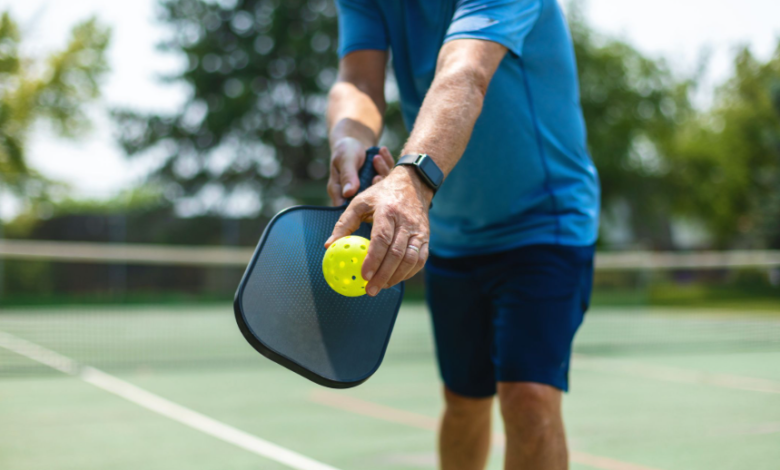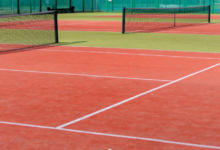What is a Fault in Pickleball? 10 Common Violations Explained

Every pickleball player, from beginner to pro, must understand one fundamental concept that determines the flow of every game—the fault. If you’ve ever wondered what is a fault in pickleball and why it happens, you’re not alone. Knowing the most common violations not only helps you avoid losing points unnecessarily but also improves your overall game awareness and consistency. In this guide, we’ll explain what a fault means, explore the ten most frequent types, and discuss how top brands like Srikel Pickleball are helping players refine their precision and reduce unforced errors.
Understanding What a Fault Means in Pickleball
In simple terms, a fault in pickleball is any action that stops play due to a rules violation. A fault can occur during the serve, the return, or in the middle of a rally. Depending on who commits the fault, it either results in a loss of serve or awards a point to the opposing team.
Unlike some other racket sports, pickleball emphasizes control, positioning, and strategy over pure power. That means understanding the rules and avoiding mistakes is just as crucial as developing skillful shots. Let’s break down the most common faults every player should know.
See also: Why Garage Door Repair Is Crucial for Maintaining Home Safety
1. Serving Above the Waist
One of the most frequent serving faults happens when the ball is struck above waist level. The rules clearly state that the paddle must make contact with the ball below the navel in an upward motion. If the paddle goes too high, it’s considered an illegal serve. Using a well-balanced paddle like those from Srikel Pickleball can help you maintain better control over your swing angle and ensure a legal underhand motion.
2. Foot Faults During Serve
A foot fault occurs when the server steps on or across the baseline before striking the ball. This mistake often happens due to poor foot placement or over-rotation. Practicing with consistent serving drills can help players build discipline and avoid losing valuable points over simple missteps.
3. The Ball Landing Out of Bounds
If the ball lands outside the designated boundary lines, it’s an automatic fault. Knowing the court layout and controlling shot depth are key to preventing this. A high-quality paddle like Srikel Pickleball’s lineup can make a big difference, offering better shot feedback and balance to help keep your hits precise.
4. Hitting the Net
Whenever the ball hits the net and fails to cross into the opponent’s court, it’s a fault. While this seems straightforward, it often results from rushed swings or misjudged power. Focusing on smooth, controlled contact—especially with paddles that provide a stable surface like Srikel’s—can help minimize net faults.
5. Volleying in the Kitchen
Perhaps the most infamous pickleball rule involves the non-volley zone, also known as “the kitchen.” Players cannot volley (hit the ball out of the air) while standing inside or touching this area. Even if your foot barely grazes the line during a volley, it counts as a fault. Staying aware of your position is essential to mastering this rule.
6. Double Bounce Rule Violation
In pickleball, the ball must bounce once on each side after the serve before players can volley it. Failing to let the ball bounce on your side before returning it—or volleying the serve directly—is a double-bounce fault. This rule ensures fair play and longer rallies.
7. Double Hits
If a player hits the ball twice before it crosses the net, intentionally or unintentionally, it’s a fault. Maintaining clean paddle contact helps prevent this. Paddles designed with responsive cores, such as those from Srikel Pickleball, provide better control and reduce mishits.
8. Touching the Net
Touching the net with your paddle, clothing, or body during play automatically results in a fault. It’s a common mistake during fast exchanges at the net. Good paddle maneuverability and body awareness go a long way in avoiding this violation.
9. Wrong Server or Wrong Receiver
Serving out of turn or returning a serve when it’s not your turn is another rule-based fault. This typically happens in doubles when players lose track of the rotation. Clear communication between partners and attentiveness to score calls can prevent confusion.
10. Ball Hitting a Player or Object
If the ball hits any part of a player or their clothing before touching the paddle, it’s a fault. Similarly, if the ball strikes an object outside the court or a permanent fixture like a ceiling or fence, play stops immediately. Awareness of surroundings is key, especially in indoor settings.
How Srikel Pickleball Helps Players Minimize Faults
Mastering pickleball requires more than knowing the rules—it’s about control, feel, and confidence. Srikel Pickleball designs its paddles with these elements in mind. Their advanced surface textures provide reliable grip and consistent response, helping players fine-tune accuracy while avoiding faults caused by mishits or lack of control. Srikel’s paddles are lightweight yet powerful, allowing players to maintain precision under pressure.
Beyond equipment, Srikel supports player education through training resources and community events, helping newcomers learn the game’s finer details and avoid unnecessary mistakes. Their dedication to enhancing both performance and understanding makes Srikel a name trusted by serious pickleball enthusiasts.
Conclusion
So, what is a fault in pickleball? Simply put, it’s any rules violation that stops play and can cost you a point or possession. From foot faults and kitchen violations to hitting the net or serving illegally, these mistakes are easy to make—but entirely preventable with proper awareness and technique.
As you refine your skills, pay close attention to these common errors and make small adjustments to your form and focus. And remember, having the right paddle—like those crafted by Srikel Pickleball—can greatly enhance control and consistency, reducing your chances of committing faults. With the right mindset, knowledge, and equipment, you’ll not only avoid costly errors but also play smarter, cleaner, and more confident pickleball every time you step on the court.

